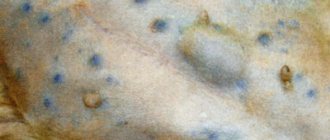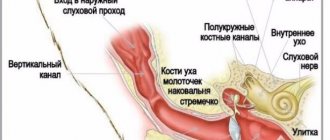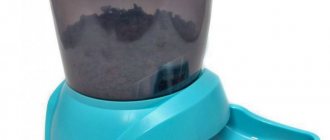7347Pavel
When owners notice that a cat has a bump on the withers, a variety of thoughts arise in their heads. In this situation, the first thing you should remember is whether your pet has recently been vaccinated.
A reaction in the form of bumps at the injection site after vaccination is a common occurrence in cats and dogs, and it does not matter how old the animal is: a year or ten. Read about the options for this complication, as well as other causes of a tumor on the withers of a cat, in this article.
© shutterstock
Is vaccination necessary?
Pets practically become members of the family. It is important that they maintain their health. However, there is always a risk of contracting dangerous diseases. Vaccinating your cat is a reliable and time-tested means of eliminating this risk.
However, in this case, temporary complications can sometimes occur. Vaccination is the infection of an animal with weakened pathogens, which it can easily cope with and develop immunity to this disease. This procedure protects not only the pet, but also its owner from serious dangers.
ATTENTION! If a cat experiences temporary complications, the caring owner is obliged to do everything possible to alleviate his suffering.
Sometimes it seems that by following a certain regime for a cat, you can guarantee the absence of infection. However, in reality it is impossible to completely avoid this danger. Even keeping a cat in an apartment does not guarantee its safety. Pathogenic microorganisms can be brought into the home, for example, on shoes.
Vaccination is necessary for the following reasons:
- Rabies is a deadly disease. Vaccination protects against it. But if this is not done, the animal may become infected and die.
- A sick pet becomes dangerous to other animals.
- A cat with rabies can infect humans with this deadly disease.
After the vaccination procedure, the risk of contracting an animal with rabies is completely eliminated.
How is it carried out?
In order to protect a cat from rabies, the first vaccination is carried out at the age of 12 weeks or a little later. As a result, the animal develops immunity that lasts for one year. To ensure reliable protection against rabies, vaccination is required annually.
It is recommended to reuse the vaccine from the same manufacturer. It is important to pay attention to how the pet tolerates the procedure . If it responds well to the vaccine from this particular manufacturer, then it makes sense to use it regularly. In the event that problems arise with vaccinations, it makes sense to consult a veterinarian about using another option.
After the injection, quarantine occurs for 14 days. During this period, the animal develops immunity. At this time, it is necessary to ensure that your pet appears on the street as little as possible and has contact with other animals. During the time when immunity is developed, the cat’s body is weakened and very vulnerable.
ATTENTION! If the procedure is performed in a veterinary clinic, this reduces the risk of adverse effects.
It is not recommended to leave immediately after the injection. It is better to wait 20 minutes to check for an allergic reaction. In this case, specialist help can be obtained immediately.
Bump on a kitten's withers
In small kittens, swelling on the neck may appear after receiving the rabies vaccine. Kittens begin to be vaccinated at 3 months of age and then annually. Most often, such a small bump goes away within 14 days.
But there are cases when swelling serves as a signal for the development of a severe allergic reaction, which can result in anaphylactic shock. It is not recommended to leave the hospital immediately after this vaccination. It is better to observe the condition of the kitten within the walls of the veterinary hospital for half an hour.
Types of complications
After vaccination, your pet often experiences temporary complications. They can be expressed as follows:
- an allergic reaction to the injection . It can be expressed, in particular, in the form of swelling, redness, and skin rashes. In such cases, an antihistamine is additionally administered. In extremely severe cases, anaphylactic shock may occur.
- may appear under the skin at the withers in the form of a small bump. The reason may be unprofessional administration of the vaccine or the individual characteristics of the animal’s body.
- Reduced immunity during the quarantine period increases the likelihood of other diseases or the appearance of worms.
- Sometimes vaccination can contribute to the manifestations of kidney failure. This is due to the fact that the vaccine is made from cat kidney cells. Once in the body, it can cause the formation of antibodies that act on this organ. The main cause of this complication is too frequent vaccination.
When a pet suffers during vaccination, a loving owner is obliged to do everything possible to support the animal and alleviate its suffering.
Post-vaccination sarcoma in cats
Post-injection sarcoma in a cat
Feline post-vaccination sarcoma is a malignant tumor that appears in areas usually following subcutaneous or intramuscular injections. The tumors have a low metastatic effect but tend to recur locally unless excised with a very wide and deep excision. One of the distinguishing features is a latency of onset of months or even years between injection and tumor development, followed by extremely rapid growth from a growth point to a diameter of several centimeters within a few weeks. Injection site sarcoma develops at the injection site of vaccines, especially feline leukemia virus and rabies. Most sarcomas resulting from vaccination appear in the subcutaneous fat layer of the shoulder blades, along the dorsal and lateral rib cage, and in the thigh muscles. Vaccines containing adjuvants cause an acute inflammatory reaction at the injection site, which is the main trigger in the development of sarcomas.
Types of sarcomas:
- Rhabdomyosarcoma
- Myxosarcoma
- Chondrosarcoma
- Malignant fibrous histiocytoma
- Undifferentiated sarcoma
- Fibrosarcoma (most common and aggressive)
Etiology and pathogenesis
Vaccine injection typically causes an acute inflammatory response that varies in severity and duration depending on the vaccine and adjuvant. Presumably, post-vaccination fibrosarcoma results from inappropriate or extreme inflammatory or immunological reactions associated with the presence of vaccine components in the vaccination site, which led to uncontrolled growth of fibroblasts and myofibroblasts.
Localization:
- Shoulder blade area
- Thigh muscles
Metastasis is predominantly hematogenous, mainly to the lungs, especially when the tumor recurs.
Diagnostics
X-ray examination of a cat with injection site sarcoma
The diagnosis of injection site sarcoma in cats is relatively simple and is based primarily on clinical signs. Visual examination reveals dense, lumpy, clearly defined, partially encapsulated, mobile and slightly painful formations. As a rule, they are detected by owners at sizes from 2 cm. As a laboratory diagnosis, the method of fine-needle biopsy or biopsy through an incision is effective. To confirm the diagnosis and clarify the specific location of the tumor, they resort to X-ray diagnostics or computed tomography of the chest and the site of damage. Information about the general condition of the animal can be provided by complete clinical and biochemical blood tests, tests for FIV and FeLV. The average age of onset of post-vaccination sarcoma in cats is lower than that of non-vaccination sarcoma and begins at approximately 6-7 years, with a secondary peak at approximately 10-11 years. Typically, cat owners report sudden, rapid growth of the tumor. Anamnesis usually reveals that vaccination was carried out one to three months ago. Sometimes this time can be up to one year.
Differential diagnosis
The diagnosis is usually simple and fairly obvious because granulomas and other epithelial cancers such as basal cell carcinomas (often cystic in cats) have a slower growth rate.
Treatment
It is now recognized that the best chance of cure is offered by a multimodal approach that combines extensive surgery and radiation therapy.
Surgery
Cat after surgical removal of sarcoma
Surgery for post-vaccination sarcoma in cats is currently based on radiological and CT findings. The mass is removed, including healthy tissue 3-5 cm of macroscopically healthy tissue from the tumor and at least one fascia under the tumor mass. These criteria are not always easy to meet, given that the tumor is located in the interscapular region. Sometimes it is necessary to remove part of the spinous vertebrae, perform a partial scapulotomy, or complete removal of the scapula, remove part of the chest wall, or amputate a limb. In all cases, good, adequate pain relief is required.
Radiotherapy
Along with surgery, radiation therapy is the main treatment for feline injection site sarcoma.
Chemotherapy
Chemotherapy is used primarily to control metastases, but it can also be used before and after surgery to reduce the size of the tumor mass. Chemotherapy may be used if cat owners refuse radiation therapy.
Forecast
An integrated approach combining surgical and therapeutic methods can reduce the rate of recurrence at the surgical site by 41-44% within two years, while recurrence of metastases (mainly in the lungs) is about 12-24%. Median survival is 23 months, with median disease-free survival of 13 to 19 months.
Prevention of relapse
- Early diagnosis. The prognosis depends on the size of the tumor. Cats with tumor sizes of 2-3 cm have the best chance.
- Early terms of adjuvant chemotherapy using high-dose regimens and further administration of antimetabolites.
- Wide excision of the tumor using ablastics and antiblastics methods.
Prevention of occurrence
Given the iatrogenic etiology of the tumor, prevention plays an important role. Currently, it is recommended for any type of subcutaneous injection (a tumor may develop after an intramuscular injection, and then the diagnosis will be made later) such places as the lateral parts of the abdominal cavity, from the spine and the limb area. It is better to vaccinate in the distal part of the limb, taking into account that tumors can lead to amputation of the entire limb. This is more effective than removing the deep part of the abdominal wall. In any case, given that sarcoma can begin not only after an injection of a vaccine, but also after any injection of a drug, a veterinarian should give injections to animals in extremely necessary cases.
If there is a lump
One of the possible complications after vaccination is the formation of a lump at the injection site. First of all, it is important to determine the cause of what happened. If you contact a specialist, he will conduct a thorough analysis, determine the diagnosis and offer appropriate treatment.
Typically, the following means can be used for this:
- taking medications;
- use of compresses;
- in rare cases, surgery may be required.
Usually this problem is solved in no more than a week.
What does the appearance of a seal mean?
A caring owner should think about how to protect their pet from the danger of contracting rabies. However, sometimes after an injection a subcutaneous lump may appear, which causes concern about the cat’s health.
The appearance of a lump cannot be a reason for panic. This reaction to an injection is possible for several reasons:
- if the animal has an allergic reaction to the administered drug;
- when using a low-quality vaccine.
In most cases, the lump under the skin goes away without the need to take any measures . In a week, no trace of her will be visible. Usually, after an injection, the solution concentrates in one place, and within a few days it disperses throughout the body. The easiest way to take care of an animal in this situation is to help this process.
This can be done by applying a compress to the injection site (on the back of the neck or between the shoulder blades). To do this, take gauze, fold it in several layers and moisten it in an alcohol solution. The compress is applied to the area of compaction for 10 minutes. The procedure must be repeated twice during the day. After its completion, the sore spot is carefully wiped.
IMPORTANT! If the animal tends to scratch the injection site, the use of antihistamines to reduce itching may help.
However, in rare cases, the appearance of a lump indicates more serious things:
- The appearance of a purulent abscess . The inflammatory process occurs as a result of the penetration of pathogenic microorganisms into the wound after an injection. In this situation, it is necessary to contact a specialist who will open the abscess.
- In rare cases, compaction is one of the signs of sarcoma. One of the signs of such a situation is the long time during which it remains with the cat. In this case, palpation does not cause pain, and the seal looks hard to the touch.
The risk of such a disease is associated with the presence of aluminum hydroxide in the composition of the drug. It takes a relatively long time for a tumor to form: from several months to many years. It always appears at the injection site and is characterized by a high growth rate and the presence of clearly palpable boundaries. Only adults are at risk of developing sarcoma. Such tumors almost never occur in a kitten or an old animal.
If a lump occurs, you can wait a few days until it resolves without doing anything . It is advisable to contact a veterinarian, but if there are no warning signs, you can act on your own.
The situation requires the mandatory attention of a specialist in the following cases:
- The lump remains unchanged for a significant period of time.
- In a situation where a wound has formed at the injection site (on the withers or between the shoulder blades), and pus comes out of it.
- An animal's restless behavior after vaccination is a sufficient reason to invite a veterinarian.
- An alarming symptom is the presence of elevated temperature.
- When hair loss occurs.
- If an ulcer forms at the injection site or throughout the body.
When bumps appear after injections, the doctor must decide what to do in the listed cases. A caring owner must monitor the situation and take action in accordance with the cat’s health condition.
Other causes of bumps
If swelling appears, but the vaccination was given a long time ago or it was not given at all, it would be useful to remember the pet’s participation in fights.
Often, a hematoma is the result of the claws of a neighbor's cat.
And if there were no “cat fights”, then the cause could be:
- Bite of a tick or blood-sucking insect . Free-ranging mustachioed striped animals are at risk. In this case, you need to unscrew the tick yourself or contact a veterinarian. The remaining parts of the mite can cause inflammatory reactions, so under no circumstances should the insect be pulled out. After extraction, it is advisable to take a blood test to check for infections.
- Lipoma or wen is a tumor that is benign in nature . It looks like a small ball that rolls freely under the skin. It is recommended to remove the tumor only if it quickly increases in size and causes discomfort to the animal. In addition, one should not exclude the degeneration of the tumor into a malignant one. The main causes of lipoma are considered to be hormonal changes and disruptions in the endocrine system. In most cases, the lump is painless, but it can put pressure on nerve endings and muscles.
- Malignant neoplasms that have metastasized to the animal’s neck . If the lump is the result of cancer, only radical treatment methods can help. In the later stages, it is recommended to euthanize your furry pet.
- Allergic reaction . The appearance of swelling is usually accompanied by drooling, itching and nasal discharge. After a course of antihistamines and removal of the source of the allergy, the pet’s condition returns to normal and the lump resolves.
Prevention
In order to minimize the risk of a cat developing a bump after vaccination or other complications, you need to adhere to the following rules:
- In order to get vaccinated, you need to contact a specialist and carry out this procedure in a veterinary clinic.
- When choosing a vaccine, be sure to check its expiration date. If it is not suitable, such a drug cannot be used.
- Although vaccination must be carried out at a certain time, you need to ensure that the animal is not sick at this time and does not have worms.
- When carrying out, it is necessary to remember that immunity exists for a limited period of time. In order for an animal to be safe from rabies infection, it is necessary to vaccinate regularly and do it at a certain time.
- After completing the procedure and during quarantine, you should not wash your pet or expose it to hypothermia.
- It is necessary to plan the procedure in such a way that it is not carried out for kittens during teething, or for adult cats during pregnancy.
After the animal has received the vaccine, it is important to monitor its condition and pay attention to any problems that arise (a wound appeared at the injection site, a lump formed, the cat was vomiting, or others). It is advisable to consult a veterinarian in such situations.
Regular vaccination will protect your pet from the risk of contracting rabies. However, the procedure can sometimes cause complications in the animal. In this case, the owner must take the necessary measures to help his cat.











